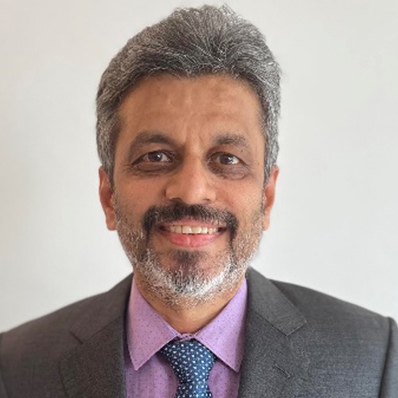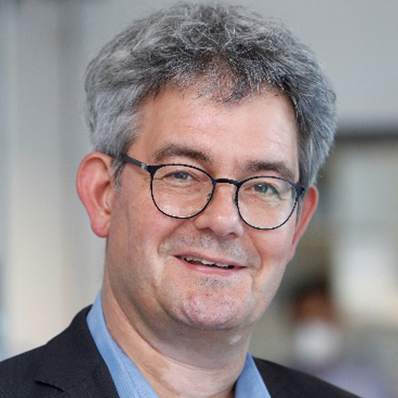- You are here:
- SETAC
- Discover Events
- Global Meetings
- SETAC Latin America 15th Biennial Meeting
- Program
- Plenary Speakers
Plenary Speakers

Santiago Mirazo
Universidad de la República, Uruguay

Santiago Mirazo
Universidad de la República, Uruguay
18 September | 12:40–13:40 UYT | Speaker Room
One Health Paradigm for Pandemic Preparedness in the Anthropocene Era
The threat of emergency and re-emergence of infectious diseases is a main challenge for the promotion of public and animal health. These processes are usually very complex and depend both on pathogen and host factors and environmental factors, mainly linked to climate change, disruption of ecosystem balance, increased biodiversity and abundance of zoonotic host species due to habitat degradation and land use. These latter phenomena had strong impact in reshaping the dynamics of the infectious diseases in the last 40-50 years. In fact, it has been during the Anthropocene when we have repeatedly witnessed pandemic episodes that have had an inestimable sanitary and economic cost in our societies. Undoubtedly, the multidimensionality of these processes and their impacts require a holistic view, with innovative ideas and new technological tools, which necessarily implies addressing all the factors that favor the frequent occurrence of these events. In this talk we will critically analyze, conceptually and with specific examples, the One Health paradigm for pandemics preparedness, defined as a unifying and integrated multidimensional approach that seeks to balance and sustainably optimize the health of people, animals, and ecosystems. Mitigation actions and policies, research gaps, and learnt lessons will be also discussed.

Prakash Hande
National University of Singapore

Prakash Hande
National University of Singapore
19 September | 13:40–14:40 UYT | Speaker Room
Environmental Toxicogenomics: Approaches to Analyzing Biological Consequences of Environmental Toxicant
Toxicogenomics, an integrated approach involving toxicology, molecular biology and bioinformatics, allows scientists to identify and characterize the genomic responses of environmental toxicants, as well as use gene and protein expression profiles to study the relationship between exposure and disease outcome. There are numerous applications of molecular genomics in environmental toxicology. Gene expression profiling was used on mammalian cells exposed to environmental toxicants such as Arsenic (sodium arsenite), Bisphenol A, and ionising radiation to identify potential biological response markers or affected signalling pathways. A multiparametric and integrated approach to identify bioindicators of toxicants especially ionising radiation will be discussed in detail. We have studied the influence of DNA repair pathways in modulating the effects of toxicants on mammalian cells. Overall, our investigations have implications in the risk estimation for environmental toxicants as well as in identifying adverse outcome pathways following toxicant exposures. By monitoring thousands of genes in cells/ tissues simultaneously, high-throughput technologies provide opportunities to characterize the expression patterns of genes and proteins following exposure to environmental toxicants with eventual applications in human health risk assessment as well as disease prediction modelling. Application of spatial biology techniques in environmental toxicology may provide insights into the mechanism of action of toxicants in situ.

Karla Pozo
Universidad San Sebastián, Chile

Karla Pozo
Universidad San Sebastián, Chile
20 September | 13:40–14:40 UYT | Speaker Room
Plastic Pollution, Chemicals and Their Impacts: From Macro to Microplastics
Global plastics production has increased exponentially since the 1950s. As a result, global production reached approximately 370 million tonnes (Mt) in 2020. Microplastics pollution has become an emerging environmental risk on a global scale. Nowadays, the ubiquitous transboundary movement of plastic waste and microplastics to the ocean is one of the major global problems due to the alteration of natural ecosystems. Moreover, their durability keeps plastic particles in the environment for a long time.
There is now an estimated 30 Mt of plastic waste in seas and oceans, and a further 109 Mt has accumulated in rivers. Rivers constitute unique environments because they safeguard biodiversity and provide water resources. However, freshwater biodiversity is under significant threat, with declines of >90% in vertebrate populations. Rivers can account for nearly 80% of global riverine plastic emissions into the oceans. The build-up of plastics in rivers implies that leakage into the ocean will continue for decades, even if mismanaged plastic waste could be significantly reduced.
All plastics are made of chemicals, from basic polymers and solvents to additives such as plasticizers, and others. Many of these chemicals are released throughout the plastic life cycle – from the production of polymers to the manufacturing, use, and disposal of plastics products – with potentially significant impacts on human health and the environment. Therefore, hazardous chemicals in recycled plastic compromise the transition to a circular economy model. Nevertheless, there is a poor understanding of such emerging impacts on aquatic environments, recycled materials, and human health.

Henner Hollert
Goethe University Frankfurt, Germany

Henner Hollert
Goethe University Frankfurt, Germany
20 September | 16:30–17:30 UYT | Speaker Room
Environmental Impacts of Chemicals – Beyond the Planetary Guardrails
Potent stressors such as the degradation of habitats, the introduction of non-indigenous species, and climate change pose an unprecedented threat to the integrity of ecosystems and biodiversity on our planet. In the last decades, the chemical risks have mounted alarmingly following an unabated increase of the global production and release of chemicals into the environment. Last year, Persson and colleagues quantified for the first time the planetary boundary for novel entities. The results were alarming and showed that humanity is already outside the safe operating space for novel entities (Persson et al. 2022, ES&T). Soon afterwards, scientists highlighted the potentially massive link between biodiversity loss and chemical pollution, and the fact that both phenomena have often been studied within subdisciplines but have been rarely considered jointly and across subdisciplines (Groh et al. 2022, ES&T). Consequently, a group of international scientists has recently expressed support for the demand of the International Panel on Chemical Pollution (IPCP) initiative and several countries to establish a “World Chemicals Council” (Brack et al. 2022, ESEU). The scientific-political body, conceived after the Intergovernmental Panel on Climate Change (IPCC) and the Intergovernmental Science-Policy Platform on Biodiversity and Ecosystem Services (IPBES), is to act as a global body to assess the consequences and promote management and regulatory action on chemicals and waste. At the fifth UN Environment Assembly in Nairobi on 3 March 2022, a resolution was passed to launch the “World Chemicals Council.”
In this keynote talk, the impact of chemicals from the perspective of planetary boundaries and the biodiversity crisis will be discussed. Although the detrimental effects of chemical pollution on humans and the environment have long been recognized, many problems have been identified only by chance and after the pollution events happened. A comprehensive understanding of the interactions between chemical pollution and biodiversity decline is needed to achieve a predictive assessment of the interactions between these components of ecosystem degradation and derive options for action and levers for transformation.
This talk will also introduce the RobustNature excellence initiative. This scientific consortium led by the Goethe University Frankfurt has been established in close collaboration with Germany-wide (the Rhein-Main-Universities, Senckenberg (SGN), the Helmholtz Centre for Environmental Research (UFZ), ISOE, SAFE FhG-IME and RWTH Aachen University) as well as selected international partners (UoS Canada, ETHZ and Stockholm University) to investigate the impact of chemical pollution and more generally novel entities on the decline of biodiversity from an inter- and transdisciplinary perspective.
